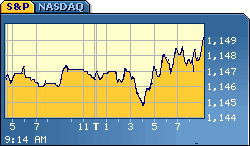The Federal Reserve has created a multitude of lending facilities (TAF, PCF, TSLF, PDCF) to meet the liquidity requirements of commercial banks and broker dealers. The BoE has followed suit with its own creation the Special Liquidity Scheme (SLS). All these liquidity operations which are outside traditional channels of open market operations beg the important question whether borrowers are prudent in their approach or rather abusive in accessing those facilities.
Data from the BoE, released Wednesday, showed that M4 lending, excluding the effects of securitizations, increased by GBP42.4 billion in April, while lending including the effect of securitizations grew by GBP26.0 billion. The GBP16.4 billion difference between the two numbers was the highest since records began, and led some analysts to speculate that banks were packaging up loans into securities to present to the BOE in return for Treasury bills.
The Bank denies any suspicious wrongdoing on the side of the borrowers since it is not fathomable to estimate lending facilities usage from M4. While this might be correct the fact that there is no real transparency is still disconcerting, especially in the light of shortfalls of many banks in the subprime debacle.
Factors affecting Reserve Balances May22
A Bloomberg article from today puts the spotlights back on the banks in a somewhat different but equally disconcerting matter. Even after the credit crisis unfolded banks are still taking advantage of "Enron accounting". The Financial Accounting Standards Board (FASB) is being blamed of not closing accounting loopholes after Enron Corp. went bankrupt in 2001.
"They never got the real problem fixed after Enron,'' said Lynn Turner, the chief accountant for the Securities and Exchange Commission when the Enron scandal was exposed. ``When people find out how little FASB did, they're going to be shocked. FASB needs to be taken out behind the woodshed and given a good whoopin'.''
Variable interest entities (VIEs), a post-Enron version of special-purpose vehicles, were set up by banks to hold an undisclosed amount in off-balance sheet funds mostly collateral debt obligations. Many of these securities have gone sour since last August when the credit crisis began. The concern now is whether lack of transparency in off balance sheet securities conceals the amount of how many of these sour investments are still hidden away in VIEs. Banks are not required to disclose the assets they sell to their own VIEs, what price was paid, or whether they have lost value, making it harder for investors to determine when the subprime crisis will end.
Citigroup, Merrill Lynch & Co., UBS AG and other banks created more than $1.5 trillion of collateralized debt obligations like Bonifacius, keeping an undisclosed amount in off-balance-sheet funds called variable interest entities. Bonifacius and $190 billion of similar securities have gone bust since October, spotlighting loopholes the Financial Accounting Standards Board failed to close when Enron Corp. went bankrupt in 2001 after disclosing investments that weren't on its books.
Citigroup spokeswoman Danielle Romero-Apsilos declined to say whether Bonifacius was put in a VIE. The New York-based bank also didn't say if any losses from the security were included in the $7.4 billion it wrote down from the ventures since September.
source: Citigroup's `Last Roman' CDO Spotlights Banks' Enron Accounting
By Mark Pittman
http://www.bloomberg.com/apps/news?pid=20601109&sid=alSlpuyVzc54&refer=news
source: BOE: Not Possible To Estimate Lending Facility Usage From M4
http://www.fxstreet.com/news/forex-news/article.aspx?StoryId=d5075443-fcf8-42a5-bf59-2262fbc9dca4
read also: New tools at the Fed - curse or blessing?
http://manonthestreet64.blogspot.com/2008/05/econweekly-has-interestig-take-on.html
Thursday, May 22, 2008
The lack of transparency in standard bank operations is still concerning
Posted by
Fred
at
3:50 PM
![]()
Subscribe to:
Post Comments (Atom)



No comments:
Post a Comment